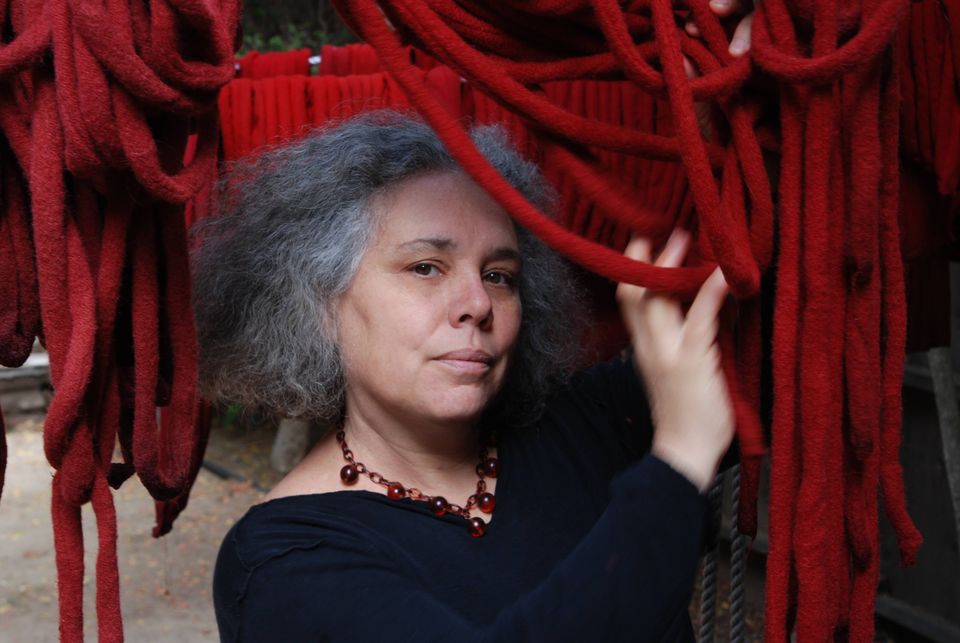Alison Saar

Photograph of Alison Saar. Photo by Tom Lesser. Courtesy of Alison Saar
- Born
- Los Angeles, California, United States
- Biography
“When I’m working with specific ideas, information from cultures outside of my own, I seek to understand them through my own personal experience in relation to everything I feel: my pain, my understanding of love or anger, what I hope for and dream about.”
–– Alison Saar, 1995
Alison Saar’s sculptures and installations are rooted in her interests in materiality and histories of art, religion, and spirituality from a global range of communities, including the African diaspora and Indigenous peoples, among others.
Saar was raised by the accomplished artists Betye and Richard Saar, whose distinct careers shaped her artistic development. Saar’s father, a classically trained art conservator at the Los Angeles County Museum of Art (LACMA), encouraged her to read books on Michelangelo, which influenced the solid and muscular physicality of her sculpted figures. Her mother’s artwork—assemblages of found objects that explore spirituality, folklore, and Black experience—fostered Saar’s interests in self-taught, African, Mexican, Native American, East Indian, and Asian art. In 1963, Saar moved with her parents to Laurel Canyon, a semirural enclave in Los Angeles, where she began the intensive engagement with found materials that proved crucial to her artistic practice, foraging for objects that she viewed as having “memory and spirit and a sense of that history.”
From 1974 to 1978, Saar attended Scripps College in Claremont, studying art of the African diaspora with Dr. Samella Lewis while making abstractions that attempted to, in her words, “evoke spirit through color and a very ethereal form.” In 1981, she received her MFA from the Otis Art Institute in Los Angeles, carving her first wooden figurative sculptures for her thesis. A year later, Saar moved to New York City and began the Studio Museum in Harlem’s Artist in Residence program in 1983. There, Saar constructed larger-than-life sculptures of women and men from salvaged tin ceiling tiles and wood. In 1991, Saar began bronze-casting public artworks, creating figurative statues that responded to their sites through layered cultural and historical references.
In the 1990s, Saar became a mother and began integrating this new experience into her work. She collaborated with her mother on works and shifted her subject matter to be “very female.” This mode culminated in Rouse (2012, SAAM), made when her daughter left for college. During this period, Saar also addressed current events such as the AIDS epidemic, Hurricane Katrina, and racial violence, creating an array of works that “attempt to distill bigotry to its essence in order to dispel it.” In the years following President Barack Obama’s election, she continued to probe racism through works that recast historical Black literary characters from racial stereotypes to autonomous subjects, such as in Reapers (2021, SAAM).
Imbuing urban and rural detritus with personal and cultural references, Saar’s career-long engagement with figuration takes “the ordinary” and goes “with it into the surreal.” As she once stated, “I’ve always treated the body as a courier for ideas, and within this shell we can understand and feel an experience better than a cerebral understanding.”Authored by Gabriella Shypula, American Women’s History Initiative Writer and Editor, 2024.













